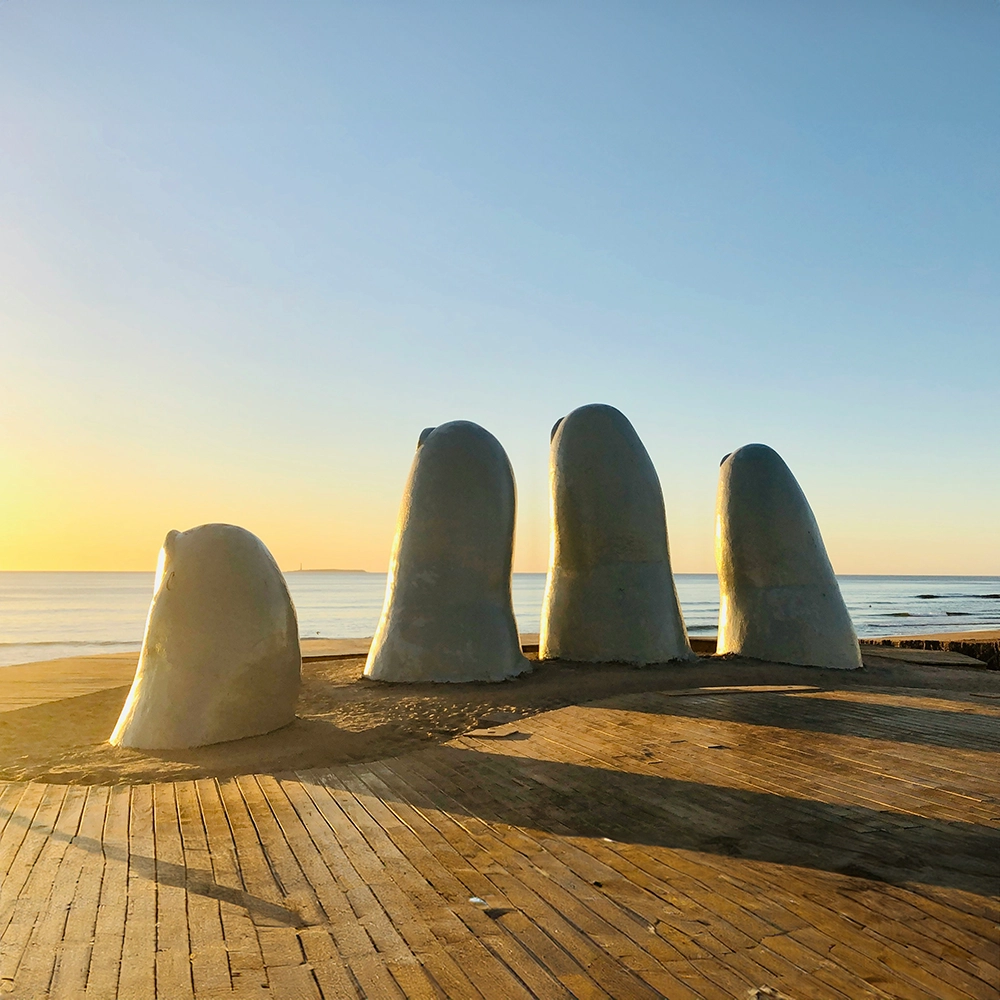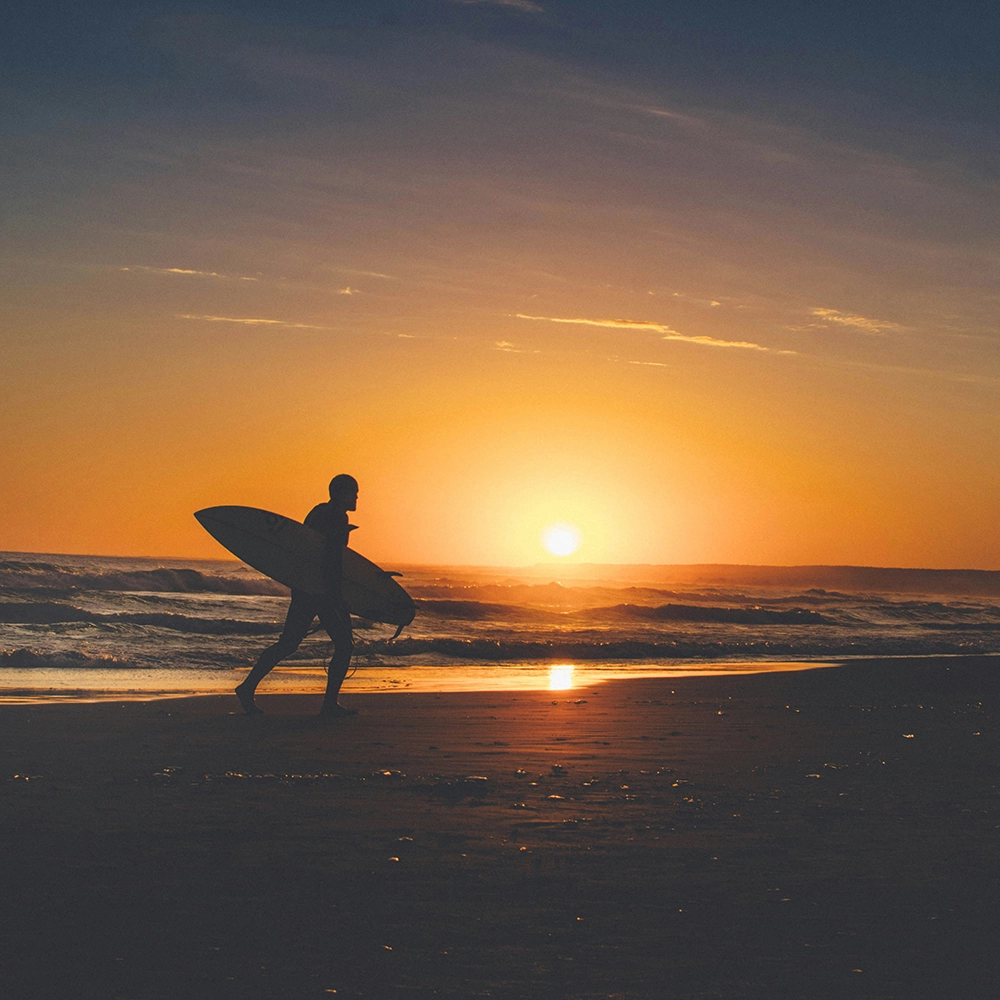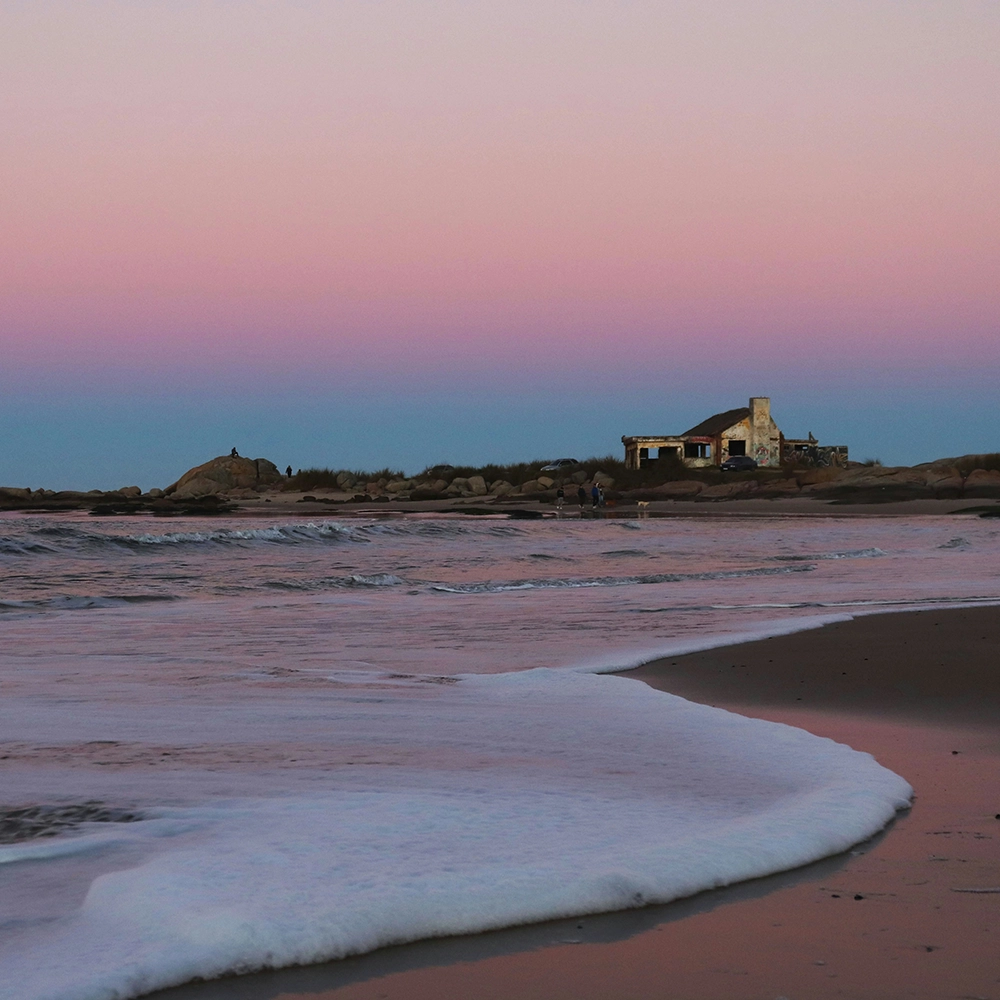I have a confession. Back in 2016, I’d been living in a little beach town along Uruguay’s coast for several months and still had never picked up a surfboard. But springtime finally arrived in the southern hemisphere, and it was time.
Fortunately, I’d made a couple good friends who happened to be semi-pro Uruguayan surfers (as one does when living in extremely small beach towns for extended periods of time). I’d casually mentioned my interest in joining them some day, and they’d pestered me ever since. Now that the weather was warm, I was officially without excuse.
So finally, one fateful spring day, the sun was shining, the beach was beckoning, and Mother Nature was an undeniable siren.
How To: Uruguay Surfing
In the land of hippie surfer beach towns, following Mother Nature’s call looks something like this: my friend stopped by my house on a Wednesday morning, unannounced as usual. We shared some tea then moseyed down the street to another friend’s house to share some more tea and borrow a wetsuit. Then we strolled through some woods to the some of the best beaches in Uruguay, did some quick yoga stretching on the sand, and in we went.
Emphasis on “in.” As in, instead of gliding across the waves, I ended up in the water. A lot.
I laid on the board until a wave came. Then my friend, from behind, torpedoed me forward to catch the wave. In one fell swoop, I would try to push up from belly to feet, getting them squarely underneath me so I could stand and stay balanced.
Needless to say, I was unsuccessful on my first countless attempts. I did later finally get the hang of it, and it’s wondrously intoxicating. But that will have to be a story for another time.
Best Beaches in Uruguay for Surfing
Despite my personal lack of stardom in the surfing world, I spent many hours discussing the ins and outs of Uruguayan waves with my more knowledgeable friends. And so for those of you who are more adept at this wonderful pastime — or want to try it out for themselves — here’s the scoop on where to go surfing in Uruguay.
1. Punta del Este — Playa Brava, La Barra, and José Ignacio
You’ll find Punta del Este on the southern coast of Uruguay, about a two-hour drive east of Montevideo. It lies on a peninsula where the Río de la Plata opens into the Atlantic Ocean.
Punta del Easte is where the surfing starts since everything to the west is technically not the ocean, but a river (albeit a river that spans up to 120 miles wide). You can still surf the beaches along the river, but people say the “real waves” start in Punta.
The most popular beaches in this area are Playa Brava, Boca de la Barra, and José Ignacio. La Barra and José Ignacio are slightly north of the city (accessible by car or public bus) and slightly less crowded. La Brava is right in the downtown area and has some good surf school options for beginners.
Even if you aren’t surfing every day, Punta should be on your Uruguay itinerary. It is one of the most popular tourist destinations in Uruguay, earning a reputation as the “Monaco of South America.”
I haven’t been to Monaco so I wouldn’t defend that title too fiercely, but I do know Punta del Este is undoubtedly beautiful, high-brow, and full of fine dining, upscale shopping and vibrant nightlife. It’s also certainly the place to spot the occasional small celebrity.
2. La Paloma and La Pedrera
This is where I lived, and I am at least minorly biased. That said, La Paloma and La Pedrera are among the best surf spots in Uruguay.
These towns, located a mere 15 minutes from each other by car, bus, or bicycle, help make up the department of Rocha (departments being similar to a state in the U.S.). With its clean white sand beaches, azure waters, and spectacular sunsets, Rocha’s reputation as the best coastline in the country is solid.
The most popular beaches in this area are Corumbá, Los Botes, and La Aguada. Even with their popularity, you might be able to avoid the worst of the tourist crowds. While high season for travel is in the summer, the Uruguayan surf season is more fall through spring, which means you could have entire stretches of beach to yourself.
3. Cabo Polonio
Heading about another hour up the coast, we reach the small, strange, incredibly popular town of Cabo Polonio, Uruguay. The first time I ventured to Cabo, I had the unnerving sensation that if ever there were to be a zombie apocalypse in the world, it would begin right there.
The strangeness of the town is mostly due to its location. It’s entirely inside a protected natural reserve. There are no motorized vehicles except authorized jeeps, the only electricity comes from generators, and the overall vibe is abundantly hippie.
Cabo Polonio is bordered only by beach and dunes, and the next nearest town is a several-hour walk across the sand. Needless to say, it’s stunning, remote, refreshing, and slightly overpriced (since everything has to be hauled in across miles of sand dune).
Generally, Cabo attracts a more bohemian type who is down for a lot of walking, limited electricity, and deep connection to nature — and its surfers are no different.
The most popular beach in this area is Playa Calavera, on the northern side of town.
Here’s an important note about the local wildlife. In addition to hippies, Cabo houses one of biggest sea lion marine reserves in the world. While the sea lions tend to spend significant time congregating on rocks to sunbathe, they, obviously, also swim.
If you are riding the waves, it’s not uncommon to see sea lions alongside you doing the same. There’s nothing to panic about, as they are peaceful creatures unless threatened.
4. Punta del Diablo
Continuing about an hour from Cabo Polonio, north up the coast toward Brazil is Punta del Diablo. This is one of the most famous beach towns in Uruguay, for surfers, swimmers, and sun-tanners alike. In fact, many people venture up from here through the border town of Chuy and into southern Brazil to continue their wave-chasing journeys.
Punta del Diablo is perhaps the smallest of the four destinations, with a year-round population of only about 500 people, although nearly 25,000 tourists pass through each year. At least some of those head for La Viuda, the city’s most popular beach.
Pesqueros, in nearby Santa Teresa National Park, is another favorite surf spot.
Punta del Diablo is famed for its long, beautiful beaches, artsy town, and proximity to other outdoor attractions. When you take a break from the waves, check out the Ombú forest, try your hand at sand boarding, and take advantage of the ever-present horseback riding opportunities.
Top Tips for Surfing in Uruguay
There’s more to successful surfing than just having good balance. Keep these tips in mind to make the most of your surfing in Uruguay.
- The best time to surf in Uruguay is from April to November.
- If you go in the colder months of July and August (remember, that’s winter in the southern hemisphere), pack a wetsuit. You can still get good waves, but the water is not warm.
- Windguru is the best site to check for daily prognostics.
- Pay attention to local weather conditions and signage to make sure the surfing conditions are safe.
- This surfing guide (in Spanish) offers more details on exact wave heights, wind directions, left/right point breaks, and more.
Surf Safely in Uruguay
While a total adrenaline rush, surfing also comes with risks. Make sure you’re protected with travel insurance that includes coverage for adventure activities. This additional coverage is necessary if you if get injured on the waves and expect your travel insurance to pay for your medical bills.
See what else travel insurance can do for you — and get a quick, no-commitment quote — at SevenCorners.com. If you have questions about whether surfing is included in your plan, talk to an agent and make sure you have the best coverage for your next surfing adventure.



